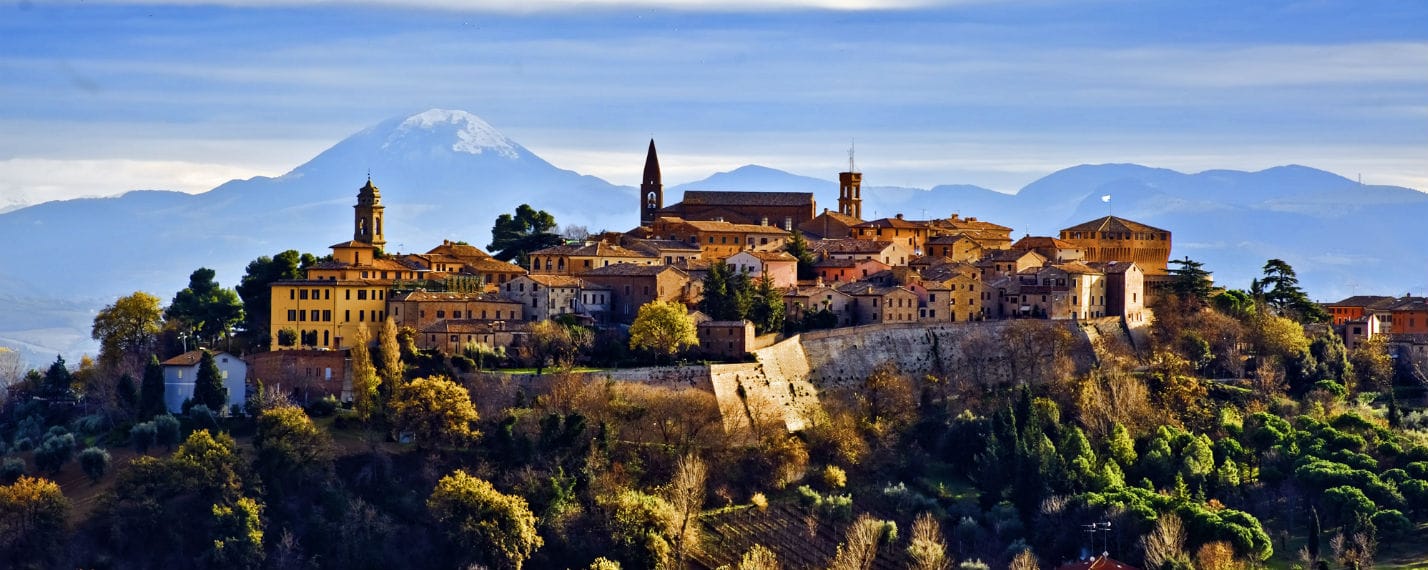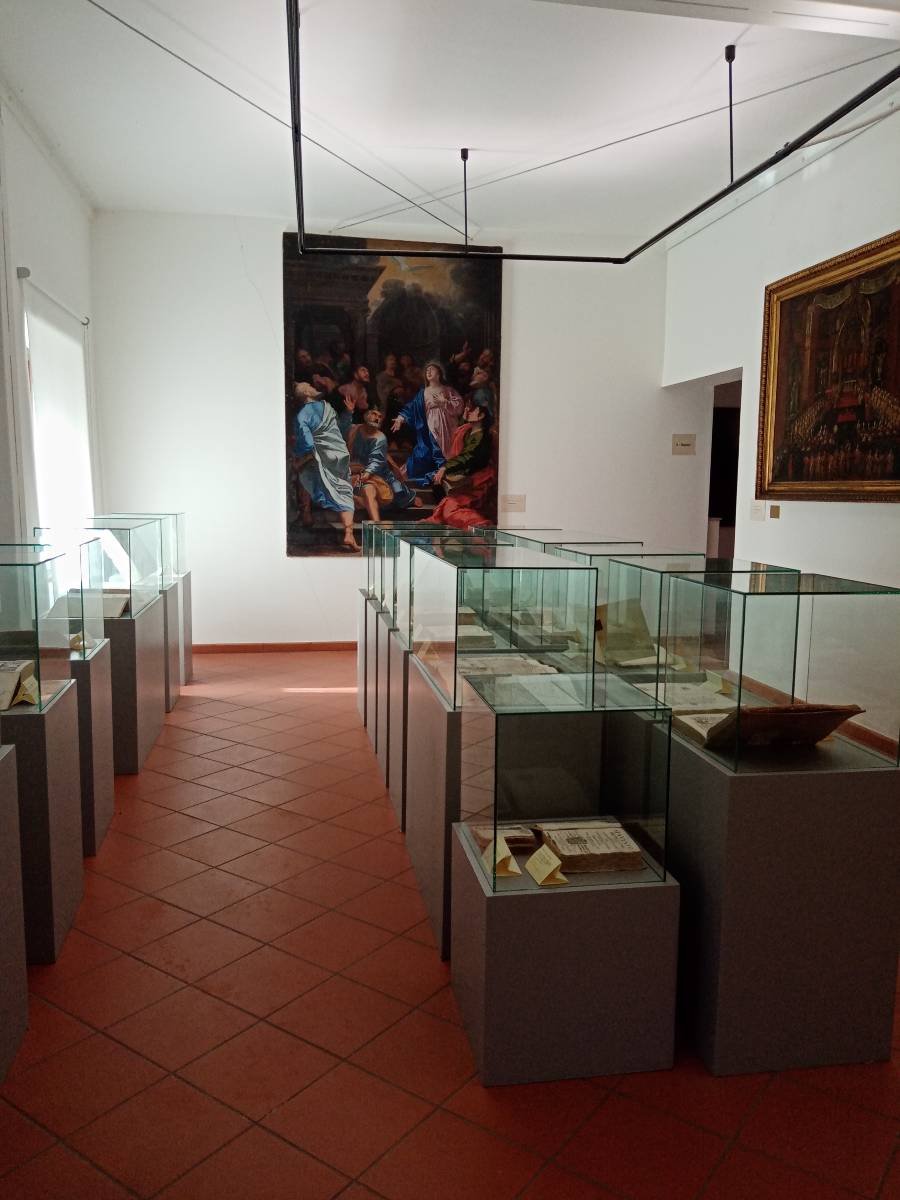Located within the Franciscan cloister, it houses various types of material, evidence of the surrounding area, mostly from convents of the suppressed orders.
The portal of the Franciscan museum features the symbol’s coat of arms carved in sandstone at the top: the arm of Christ, naked, crossing with that of St Francis, dressed in his habit.
Many of the valuable texts that made up the library of the Capuchin monastery are displayed here throughout the four rooms. Their provenance is ascertained by the inscription “Ex libris Biblioteca Capucinorum Montis Avium” written in pen on some of the books.
Selected books from various disciplines are exhibited in chronological order from the 16th to the 19th century. There are volumes on literature, philosophy, medicine, theology and law.
Among the various texts, three incunabula (typographical documents prior to 1501) are worthy of note, including the ‘Paulina’ by Paulus de Middelburg, astronomer to the Duke of Urbino and Bishop of Fossombrone. It consists of studies of history and astronomy to calculate the exact day on which Easter should be celebrated. It was printed in 1513 by Ottaviano Petrucci from Forsemprone, inventor of movable type applied to the printing of musical scores. The value of the work lies in the technical and artistic values, the typographic elegance, the beautiful xylographic friezes framing the cards, the initials decorated with floral and faunal elements and, above all, the clarity of the typeface that reveals the hand of the engraver.
Among the various canvases on display is a sketch for a painting attributed to Pier Leone Ghezzi
(Rome 1674-1755), depicting the ‘Lateran Council of 1725’ with Pope Benedict XIII, cardinals and bishops. There are also some fine canvases from the school of Barocci, including a ‘Crucifixion’ (oil on canvas, 17th century) and a ‘Madonna with Child, St Michael Archangel and St Eleutherius’ (17th century), the work of Claudio Ridolfi.
You can also admire a wooden ciborium, a splendid work of cabinet-making in inlaid cherry wood and bone, made in the 17th century by Fra Liberato da Macerata and coming from the church of the Capuchin convent.
There is also a 17th century tabernacle made of painted stucco in green tempera and sandstone, with gold trim, from the adjacent Church of St. Francis.
A polychrome bench with a straight, linear seat (18th century) from the convent of St Francis (note the Franciscan symbol at the top). Painted benches or chests were used to decorate entrances and large halls in both palaces and convents, and are a type of ornamental furniture that was quite common in the Marche and Emilia regions.
Inside the cases, numerous fragments of ceramics and majolica testify to the activity of three kilns operating in Mondavio from the fourteenth century until probably the sixteenth century.
In addition to tiles and roof tiles from the Church of St Francis, there are also some noteworthy sandstone sculptures. Three specimens depict the Saint of Assisi: the largest statue comes from the Capuchin convent and dates back to the 16th century. The ‘Madonna di Loreto’ (late 16th century), formerly located on the façade of the town hall, is also of fine workmanship. These sculptures were probably made by sculptors from S. Ippolito, a small village near Mondavio and home to very skilled stonemasons, whose work can still be seen on site.
Finally, there is a 14th-century bas-relief, carved in stone, attributed to Michele da Firenze, depicting a “Madonna and Child”, which was on the cloister wall until a few years ago.
ufficio.turismo@comune.mondavio.pu.it



